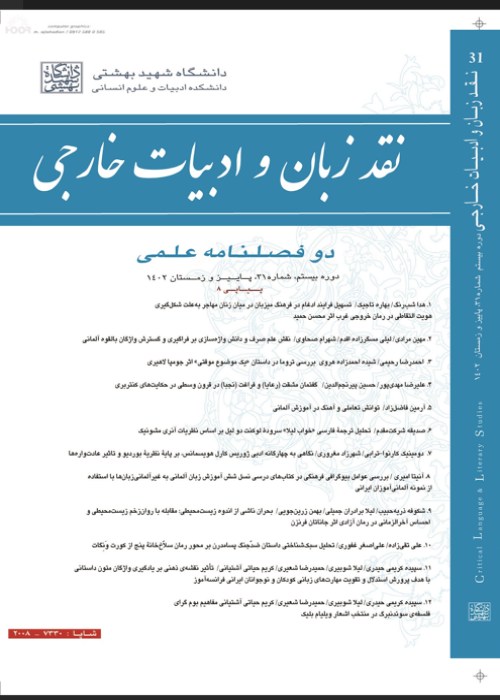Analysis of Genitive and Attributive Collocations in Russian and Persian Languages in Order to Determine the Necessity of Teaching them
Introduction:
In the paper collocations are introduced and their significance in teaching foreign languages is discussed. During the last decades there has been a growing attention to word combination and its significance in teaching foreign languages. Word combinations, of course, include free word combinations, fixed word combinations and even idioms. But collocations are different from all other forms of word combinations. In spite of this fact collocations are mostly ignored in the text books of Russian language in Iran.Background of the StudyIn Russia word combinations in Russian language were in the center of attention from 19th century. But the first famous linguist who determined so called “complex word combinations” was Filip Fortunatov. He used this term to differ this kind of word combinations from complex words. But the word “collocations” for the first time was introduced in A Dictionary of Linguistic terms by O. Akhmanova in 1966. Then collocations were fully discussed in a small, but comprehensive book by E. Borisova in 1995. From then Borisova’s book has been the main source in all discussions about colocations. In Iran M. Bateni was the first linguist who tried to describe the meaning and function of collocations in Persian language. After several decades also by him the first dictionary of English and Persian colocations was written. In their article Valipour and Rahbari discussed the verbal Russian colocations. They demonstrated that in Iran not much effort has been made to study collocations in order to use them in teaching Russian language.
Methodology:
In this corpus-based study the syntactic and lexical-semantic patterns were used to determine syntactic structures used in Russian attributive and genitive collocations and in their Persian equivalents. The research carried on by using a corpus containing approximately 400 Russian collocations, which have either attributive (Adj. + N.) or genitive (N. + N.) structures. Some famous and common classifications of collocations are analyzed. As the result of the analysis the classification, in which collocations are classified from the syntactic point of view into two groups a) verbal collocations and b) nominal (attributive and genitive) collocations, is proposed as the more proper one in teaching foreign languages. The main question of the research is that how much synonymous Persian and Russian collocations coincide and in which degree it is necessary to include collocations into the programs of teaching Russian to Iranian students. The structural (syntactic) and lexical-semantic features of collocations are discussed and it is demonstrated that from both structure and lexical-semantic points of view which correlation is there between Russian and Persian collocations. The obtained correlation shows that while attributive collocations dominate in Russian collocations, but their Persian equivalents mainly have genitive structure. On the other hand, lexical-semantic analysis proved that there is a little concordance between Russian and Persian collocations. The amount of non-concord pairs of Russian and Persian collocations was highly more than concord ones.
Conclusion:
The practical conclusion of the article is showing necessity of including the collocations as a separate subject in Russian language curriculum. The authors also proposed that the subject should lead to develop 3 following skills among students: 1) the skill of recognizing collocations (fixed word combinations); 2) the skill of recognizing the agreement (concordance) or disagreement (non-concordance) of Russian collocations with their Persian equivalents: 3) the skill of changing the structure of colocations (from genitive to attributive, while translating from Persian into Russian and from attributive to genitive, while translating from Russian into Persian), where this is necessary.
- حق عضویت دریافتی صرف حمایت از نشریات عضو و نگهداری، تکمیل و توسعه مگیران میشود.
- پرداخت حق اشتراک و دانلود مقالات اجازه بازنشر آن در سایر رسانههای چاپی و دیجیتال را به کاربر نمیدهد.



